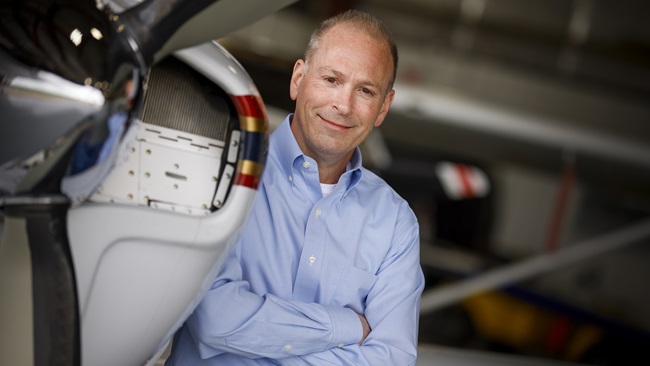Fuel cap fiasco
Your aircraft is speaking to you
I turned my head expecting to see a bird flash by but instead was astonished to see fuel siphoning out of the left tank. As I looked at the impressive stream of fuel with a mixture of curiosity and disbelief, I soon realized the fuel cap had departed the airplane.
Two hours earlier, Senior Director of Publications Sarah Deener, Director of Photography Chris Rose, Video Content Producer Jamal Warner, and I had made a fuel stop at Savannah/Hilton Head International Airport (SAV). After the fuel truck operator finished, I went to remove the fuel caps to confirm the tanks were topped off as I expected. I was a bit surprised and disappointed that the left fuel cap was not fully secure.
To close the Bonanza fuel cap, you insert it into the filler neck and twist right about one eighth of a turn, then push down a locking tab on the fuel cap, which seals it in place. It was this tab that was not pushed down that bothered me. How careless, I thought. The cap could have fallen off in flight. I secured the cap, did my “McSpadden walkaround,” (see “Safety Spotlight: Bruised Ego,” July 2020 AOPA Pilot), and we departed. Everything was normal until we approached DeLand, Florida.
The lack of a fuel cap was not an emergency, even though watching fuel siphon from the tank provoked a powerful, uneasy feeling. I had immediately confirmed the fuel valve was switched to the tank that was not leaking and knew I had plenty of fuel remaining to land. However, I instinctively knew—thanks to decades of reading “What Went Wrong” articles in this magazine—that the fuel venting from the tank was a huge distraction that could lead to a real emergency if I lost focus during this critical phase of flight.
In order to focus my mind—and provide some assurance to my co-workers—I said out loud, “I’m not going to let this distraction cause me to do something stupid. Fly the airplane.” Next, because I’m determined never to have an accidental gear-up landing, I recited a GUMPS check out loud so that right seat pilot Deener could back me up on my actions. She also helpfully called out the numerous aircraft all seemingly descending on this nontowered airport at the same time.
The landing was uneventful, and a maintenance specialist surmised the tabs on the retaining ring that was attached to the fuel tank filler neck had broken or bent in a way that would no longer secure the fuel cap. We didn’t know for sure because the retaining ring also fell off the aircraft. The Savannah line agent did nothing wrong—the fuel cap just wouldn’t lock in place. A local mechanic installed a locking fuel cap (with a key) that used a different type of retaining ring, and we resumed our trip.
Later that day, “what if” questions began percolating in my mind. Our first leg from Frederick, Maryland, to Savannah was more than three and a half hours long, much of it in IMC. Some of the airports along our route were below IFR minimums (although improving rapidly). What if the fuel cap flew off in those conditions? Would we have had adequate fuel in the “good” tank to reach an airport with an instrument approach? What if we were flying over mountains or desert where airports may be few and far between? Although losing a fuel cap must be very rare, it’s made me think more about what I consider to be adequate fuel reserves. And keeping fuel levels balanced in both tanks—not letting one tank get low while the other has plenty—also has new meaning to me.
Two months later, the Bonanza was the lead aircraft on a five-ship formation flight. I was the number two aircraft in the formation. Five seconds after the Bonanza began its takeoff roll, I applied full throttle and climbed in a loose formation. The moment the Bonanza gained lift and left the ground, I saw fuel siphoning from its right wing tank. This time I knew exactly what happened and advised the pilot, who remained in the pattern and landed without incident.
We retrieved the fuel cap from the side of the runway, and the retaining ring remained on the fuel filler neck. The retaining ring tabs had bent from years of use and fuel nozzles banging on them (just as the left-wing retaining ring tabs had likely bent), allowing the fuel cap to fall off the aircraft.
The lesson I learned that day is if a part fails on your airplane and your airplane has more than one of those parts—think wheel bearings, aileron cable pulleys, control wheel universal joints—proactively check all similar parts. Your airplane may be speaking to you, and sometimes these complaints come in pairs. 



